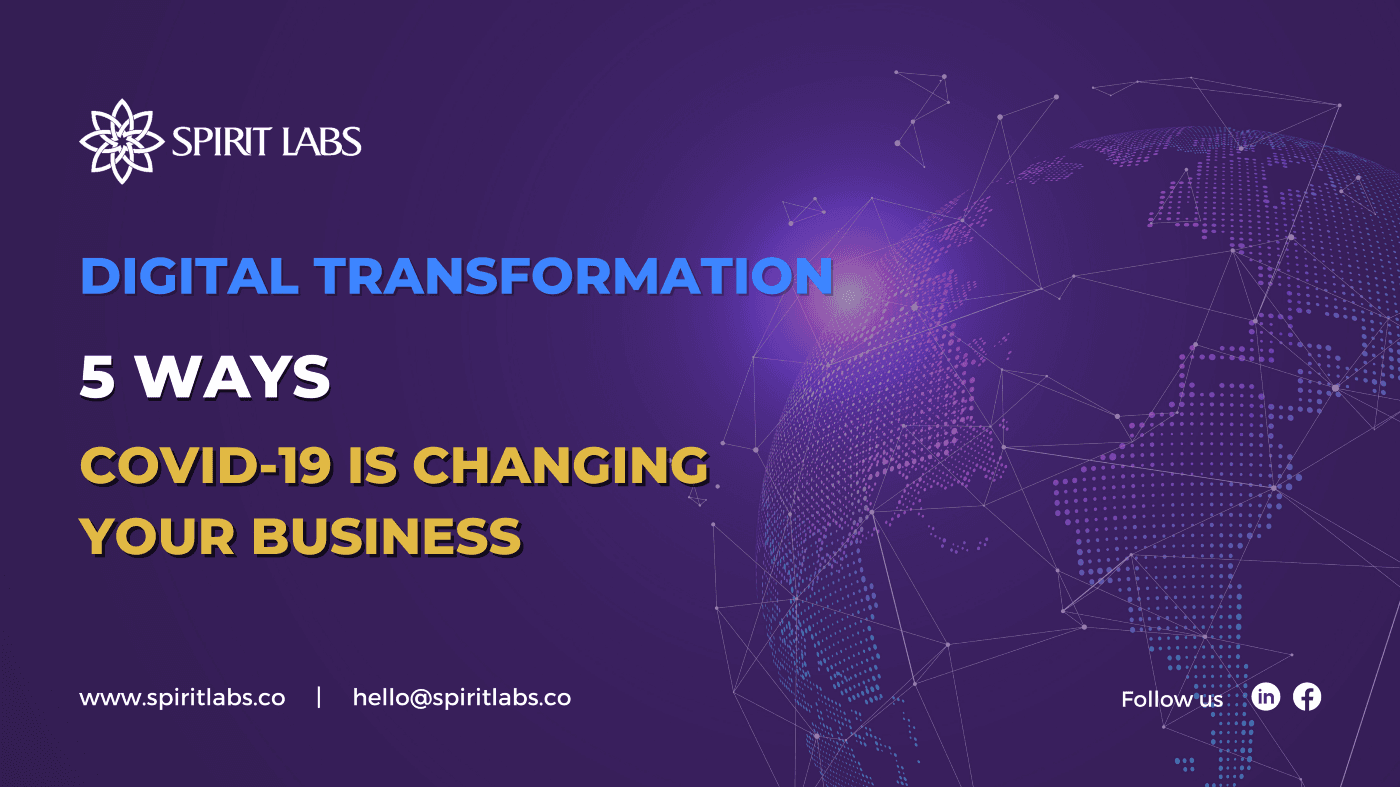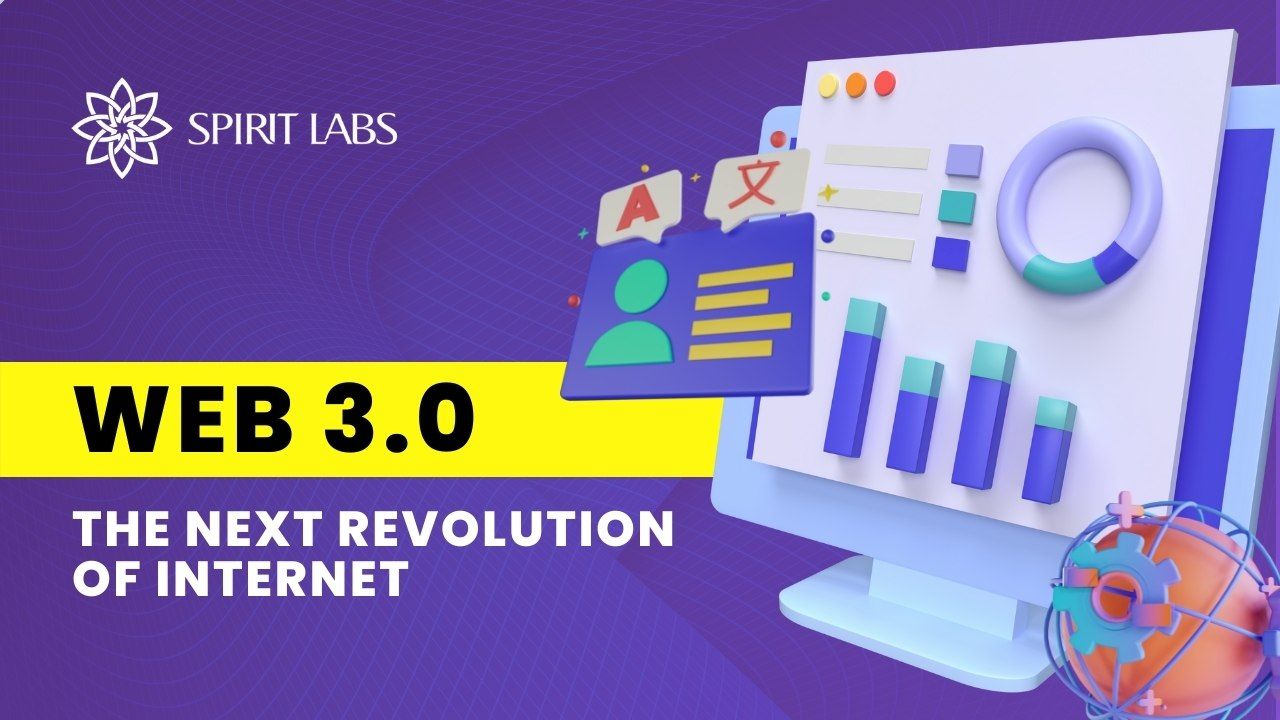
Digital Transformation: 5 ways Covid-19 is changing your business
In recent years, the COVID-19 crisis has triggered digital transformation in the way companies do their business. When this pandemic broke out, much of the world moved online, accelerating a digital transformation that has been underway for decades. Children began attending class remotely; many employees started working from home; and numerous firms adopted digital business models to maintain operations and preserve some revenue flows.
Additionally, customers have been used to receiving products and services with little or no contact to people, calling for remote or at least contact-limited operations from a customer-facing direction as well.
To adapt to the situation and advance the challenge to change the game, Software outsourcing is a wise option for businesses to leverage the business operation , especially for SMEs to be able to benefit if they learn quickly how to implement this strategy.
There will be an even faster acceleration of digitalization and automation across the board. We have seen numerous in-person activities switch quickly and successfully to being delivered online. From virtual work from home to telehealth, distance learning, online shopping, entertainment, journalism and virtual physical activities such as yoga and fitness training, many activities managed to switch to online delivery.
Two major technology trends will accelerate in the post-Covid-19 world: touchless technologies and highly automated robots that augment human tasks. It is likely that we will see additional robotic automation and AI in supply chains, customer service and beyond. With robots, the IoT and the increasing availability of 5G technologies, we will see an array of touchless technologies take off, such as robots that make your food or drinks. New devices and technologies will be designed with touchless-first or minimal-human-intervention principles. We already see examples of the acceleration in touchless technology and AI-driven automation adoption in airports with self-service check-in, where passengers create a digital token on their smartphone that can verify their identity.
The percentage of workers permanently working from home is expected to double in 2021, according to a survey from ETR. Before COVID-19, remote work was a small part of the way organizations designed work, but it typically was not a material part of workforce strategy. This pandemic forced many physical work sites around the world to close, requiring employers to implement remote work for all of their employees. Nearly half of employees worked remotely full-time during the pandemic, and another 28% reported working remotely at least part of the time.
The global video conferencing market size is expected to reach USD 9.95 billion by 2028 with a CAGR of 11.4% over the forecast period, according to a new report by Grand View Research, Inc. Trends such as the increasing transition towards cloud and the growing adoption of Video Conferencing as a Service (VCaaS) are expected to drive market growth. Video conference platforms are now driving a huge demand and will be one of the best solutions in the long-term as remote and globalized working models are becoming popular.
The dramatic rise in e-commerce amid movement restrictions induced by COVID-19 increased online retail sales’ share of total retail sales from 16% to 19% in 2020. This shows that the demand for online shopping is going up day by day. According to MDPI research in 2021, The industrial market and consumer market both faced a need to accelerate digitalization and make it easy to find and purchase items online. The pandemic sparked a meteoric rise in online sales. As visits to physical stores were restricted, and many were running low on money, consumers went online to shop, causing online purchases to grow higher. Consumers were generally mindful shoppers even before the pandemic.
The E-commerce industry is potential yet competitive. Not only for this pandemic but for a long-term strategy, online business will grow steadily due to consumers’ behaviors nowadays. For those companies wanting to enter the E-commerce market, an advanced and professional online marketplace platform is the key for business success. However, you should keep in mind these 6 things before starting an E-commerce business to be well-prepared for the upcoming steps.
Cash might carry the virus, so contactless digital payments, either in the form of cards or e-wallets, are the recommended payment method to avoid the spread of COVID-19. Digital payments enable people to make online purchases and payments of goods, services and even utility payments, as well as to receive stimulus funds faster. According to Statista, total transaction value in the Digital Payments segment is projected to reach US$ 6,752,388m in 2021.
Further, even before the pandemic, the demand for cashless payments was driven by greater convenience, favorable government policies, and evolving consumer behavior. The governments are also trying to reduce their cost of printing the currencies and counter the fake currency influx that disturbs the economic growth, with digitization, thereby, creating an environment conducive for cashless and digital payments.
Prior to the pandemic, many businesses viewed technology as a means to save money and reduce unnecessary spending. When data can be analyzed and emails automatically sent when triggered, for example, it frees up the sales team and marketing team to focus on other tasks that cannot be handled through automation and technology. However, a digital transformation also offers businesses tremendous opportunities to innovate and find their way to the front of their industry.
When technology is used well, it offers brands tremendous opportunities to innovate and mature in their ability to engage customers, answer their needs, and move forward in a new way. As brands have begun to embrace the capabilities offered by technology, they have also begun to understand and adopt this mentality.
As the world hopes for an end to the pandemic, many people are concerned about the future of the changes businesses have made in response to the pandemic. It is likely that many of these changes are here to stay. Prior to the pandemic, many organizations were just beginning to see the potential that many of these capabilities offered their businesses. The pandemic helped to accelerate the digital transformation and created a landscape that will continue to encourage innovation and technological adoption moving forward. People now begin to understand the opportunities in front of them, even after the pandemic is over.
- Article: Impact of the COVID-19 Pandemic on Online Consumer Purchasing Behavior by MDPI
- Post Covid-19: What’s next for digital transformation? By EHL Insights
- Remote work after Covid-19 by Gartner
- Forbes’ article: This is the future of Remote work in 2021 by Caroline Castrillon
- Forbes’ article: The ‘New Normal’ And The Future Of Technology After The Covid-19 Pandemic by Saeed Elnaj
- Going digital, faster — Impact of COVID-19 on digital transformation (KPMG global survey 2020)
- UNCTAD’s article: Global e-commerce jumps to $26.7 trillion, COVID-19 boosts online sales
- Article: Video Conferencing Market Size To Reach $9.95 Billion By 2028, Remote Working Policies Adopted Due To The COVID Pandemic To Act As Key Driver: Grand View Research, Inc.
- TrustRadius 2021 survey
- Sage Journals: Technological advancement in the era of COVID-19
- 10 technology trends to watch in the COVID-19 pandemic by Weforum.org


